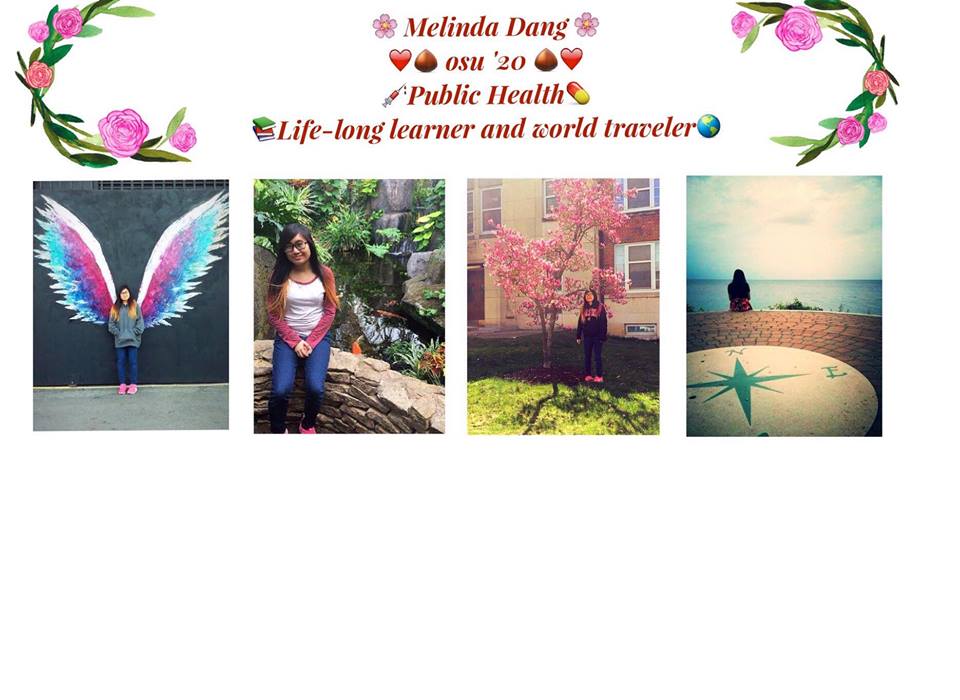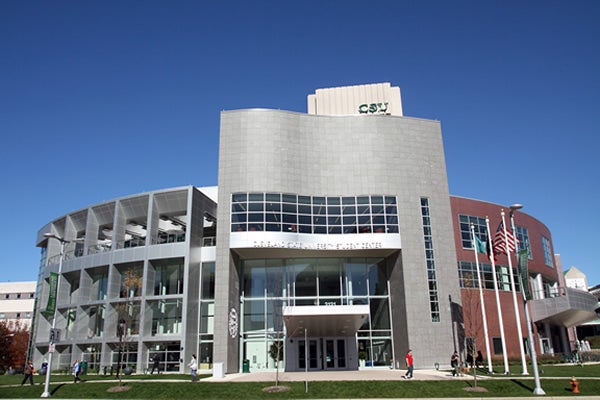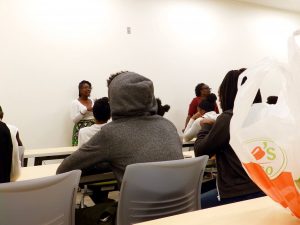One volunteering position I was involved with during this summer was on the HIV Prevention Team for Care Alliance Health Center, a nonprofit federally qualified health center in Cleveland, Ohio. Care Alliance strives to provide high-quality comprehensive medical and dental care as well as patient advocacy services to people regardless of ability to pay. They have four different clinics around the city. The target population is those experiencing homelessness and those living in/around public housing. Everyone is welcome at Care Alliance, and no one is turned away from care. (I volunteered with them previously in January!)

The Central neighborhood clinic for Care Alliance opened in 2015. In Cleveland’s Central neighborhood, 73% of families live in poverty. The infant mortality rate and the type II diabetes rate are both double the city’s average. Therefore, it is pertinent to increase health access in this area.
The HIV Prevention Team 2017 summer cohort is made up of 8 volunteers (we are all college students) split among three teams since there are three supervisors who conduct HIV tests themselves. It was an honor to be one of those selected and I was glad to be a part of Care Alliance once again. This summer, LaChanee was my supervisor and I was on her team along with another volunteer. (She is currently a HIV test counselor with Care Alliance and graduated from college in 2015.) Another impression accomplishment is that she runs her own dance business on the side.

HIV has stigma attached to it, and my hopes while I was volunteering was to decrease the discrimination and dispel common false perceptions about it.
In May, I applied and interviewed for the volunteer position, which was posted on Care Alliance’s Facebook page, which I follow. I was immediately drawn to the role because of how much impact it could have on my community and the valuable skills I would gain from the experience. Some requirements for this HIV prevention role were good verbal and communication skills, cultural sensitivity, open-mindedness, optimism, responsibility, and accountability. Being at least 18 years old with a high school diploma or equivalent was also needed. I was chosen to be in the cohort after showing that I was serious and committed to the betterment of the community. Afterwards, there were mandatory training sessions later in May, and prior to that, I had to research more on HIV to get a firm grasp of the topic.
TRAINING
Training took two days in their Central Neighborhood clinic. I brought a tote bag that was large enough to carry water, my planner, pencil pouch, and a binder and notebook to jot down notes. It pays to be prepared.
The first day, we were welcomed and did introductions. Each volunteer was provided with a folder containing documents, including the Volunteer Program Handbook. I read this handbook over multiple times to refresh my memory. The volunteer coordinator gave us training, which involved an interactive PowerPoint about patient confidentiality and we had to answer if the scenario was confidential or not. We reviewed general volunteer information like the code of conduct and expectations. We were given a packet of HR documents to complete too. Next we were provided a comprehensive information presentation, which was a run-through of HIV/AIDS, STIs, PrEP, and PEP. The counselors also covered risk reduction (with a demonstration of proper condom usage).
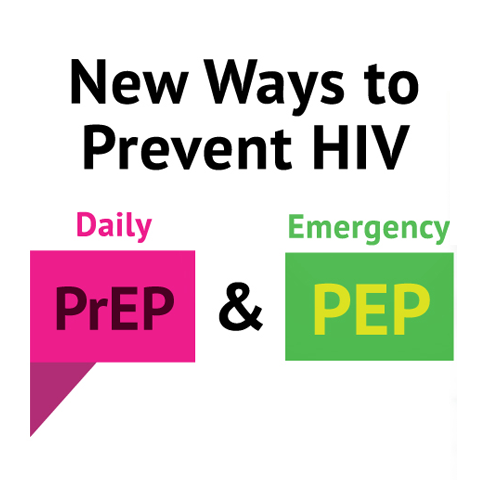
PrEP is for HIV negative people who are at high risk for contracting HIV because they engage in risky behaviors like unsafe sex with an HIV+ partner. This is taken daily for the rest of your life. PEP is post-exposure, and for people who have recently engaged in risky behaviors (such as unsafe sex or sex while intoxicated) within the last 72 hours. This is taken daily for 28 days.
The second day of training, we learned about funding streams for HIV testing, universal precautions for testing, forms and data-collection when working with clients, pre- and post-test counseling, and positive procedures. Additionally, we reviewed databases and data entry. Training ended with us getting into our teams and meeting to discuss anything we had to do before June. Leaving training, I was excited about the scope of my volunteer work with Care Alliance (which I’ll call CA). However, I was informed that I’d be finger pricking clients, and I assumed I’d only do cheek swab tests. I was not feeling that comfortable taking even a drop of blood from a person. Then I was told that cheek swab tests (or OraQuick) are more expensive and may not be as accurate. So I had to do this even if it made me uneasy. Besides training, I had to complete a drug screening.
Throughout my volunteer tenure, I was required to wear business casual clothing for the office and more casual while we were doing outreach on the streets. With outreach, especially if outdoors, jeans and sneakers are allowed! A CA volunteer badge was also worn to identify that I was with the organization. Personal hygiene was important, as well as high respect for everyone I encountered. I held myself to the standard of treating each client as if they were my own family member. But above all, the number one important thing during work was to protect and maintain patient confidentiality!

This is the Alere Clearview Complete 1/2 HIV Test, which Care Alliance workers call Clearview for short. This test involves pricking the finger to draw blood. In 10-15 minutes, results are ready!
In June and July, I helped work towards preventing HIV transmission through a variety of methods like conducting rapid testing and risk-reduction counseling around the community. I conducted HIV testing in clinic as well as at community events with the HIV Testing Mobile Unit; some activities were in the evenings/on weekends. My work schedule conflicted with my volunteering one and did not allow me to conduct HIV education sessions like originally planned. Additionally, I assembled and distributed risk reduction materials such as condom kits. Also, I scheduled primary care and PrEP appointments as well as assisted with quality control of all required paperwork. Everything I did, I recorded in my daily journal. I was required to keep and turn in a monthly log for my volunteer tenure as well.
In one or two hours, my colleague and I prepared over 100 condom kits, which consisted of five condoms, five lubricant oil tubes, a business card, and a sticker. This was for Safe on the Scene, a CDC-funded initiative.
Rapid testing is done at the site of care and can be completed in about 20 minutes! They are highly sensitive and specific tests, so results are usually accurate, but they need to be confirmed by additional testing if the result is positive.
Risk-reduction counseling involves discussing with the client what are things they can do to lower their risk, realistically. For example, some people who have had 50 sexual partners within the last year will not likely change to becoming abstinent. They may lower that to 25 partners a year. It has to be something they can stick with, and be completed incrementally (baby steps!)
One major project I was involved with was a CDC-funded HIV prevention initiative called Safe on the Scene (SOTS). Their slogan is Safe Just Got Safer. This $4 million initiative is intended to turn around incidences of HIV in Cuyahoga County, and the target population is African American males who have sex with males (MSM).
According to HIV/AIDS surveillance records at the Cleveland Department of Public Health, approximately 200 county residents were newly diagnosed with HIV-only or HIV-with-AIDS in 2013, and 42 percent of all HIV cases in 2012-2013 were among African American males ages 13-29. That’s almost one in two men.
(Source URL: http://www.carealliance.org/2015/07/07/newsletter-july-2015/)
Therefore, the most at risk for HIV contraction are African-American MSM.
Recovery Resources and Planned Parenthood of Greater Ohio are partners of Care Alliance for this initiative. From this project, it is estimated that over 30,000 people will be served during the five-year span. Progress can already be witnessed; in 2015, Care Alliance reported that they provided risk reduction counseling and HIV testing to 3,314 individuals!
JUNE
Most of my time was concentrated around Care Alliance’s Stokes Clinic (6001 Woodland Avenue, second floor), on the east side of Cleveland, and outreach events at places like Walgreen’s and public centers.
- June 5 – Walgreen’s in Lakewood, OH
- I went on the Mobile HIV Testing Van to recruit people and conduct the questionnaire to assess their sexual health behaviors.
- Recruited two women!
- June 7 – Prepared condom kits at our Stokes Clinic for distribution and recruited people around the neighborhood for walk-in testing
- Tested real citizens for the first time! I tested three men!
- Went to Woodland library nearby and hung poster on bulletin board!
- June 15 – LGBT Center of Greater Cleveland
- This was my first time at this center, which is a huge, great resource for not only the LGBTQ community but also allies. It was a lovely facility, and colorful. My colleague Bailee and another volunteer Katherine were present with me; they focused on recruiting people outdoors. Altogether, I tested four people, all of whom were walk-ins, and my testing skills were getting better. I did have awkward silences with the first couple of clients, but one client and I had a nice conversation. I found myself sharing life details with that person! He made me appreciate my work more.

- This was my first time at this center, which is a huge, great resource for not only the LGBTQ community but also allies. It was a lovely facility, and colorful. My colleague Bailee and another volunteer Katherine were present with me; they focused on recruiting people outdoors. Altogether, I tested four people, all of whom were walk-ins, and my testing skills were getting better. I did have awkward silences with the first couple of clients, but one client and I had a nice conversation. I found myself sharing life details with that person! He made me appreciate my work more.
- June 17 – Park Village Apartments (Section 8 Housing) in Hough neighborhood
- There was a community event in this public housing neighborhood, including a cookout, bouncy house, DJ, and resources fair. The booths in the courtyard included Planned Parenthood, University Hospitals, and more.
We parked our Mobile Testing Van close to the action, and set up our materials to test people. That afternoon, we tested four folks, which was not as much as we hoped, but Planned Parenthood also used our van to test people since they’re one of our partners. - I personally tested two people and distributed the condom kits I made!
The interior of the Mobile Testing Van has four chairs and a table that serves as the work surface for testing. It is actually very comfortable in the back.
- There was a community event in this public housing neighborhood, including a cookout, bouncy house, DJ, and resources fair. The booths in the courtyard included Planned Parenthood, University Hospitals, and more.
- June 24 – Cleveland’s 28th Annual Pride Festival
- For five hours, I attended my first Pride! With a handful of Safe on the Scene workers, we walked in the Parade at noon and held a giant banner! I do not have a strong, powerful voice when I shout out so I couldn’t be heard well but the others hollered out “Who are we? Safe on the Scene! What do we want to be? HIV free! Safe on the Scene! Safe on the Scene! Safe on the Scene!” And then another worker following behind the banner yelled out “Get tested! Know your [HIV] status! Knowing is sexy!” It felt so different to be walking in a parade with hundreds of people watching you from the sidewalks and the rooftops. I never knew the feeling until this day. I was so fortunate to be a part of this moment.
- At the booth we set up, we had a table in front as well as one in the back. The front table held a spin-the-wheel trivia game, free promotional items, fans, and business cards, and a clipboard. One or two people manned the front to ask the booth visitors trivia questions related to HIV, and then ask if they wanted their prize as a keychain, phone wallet, condom case (in black or pink), or a wristband. In the back, I was in charge of the build-your-own-condom-kit station. Participants write down their demographics and then get a goodie bag. They can put as many condoms and lubricants as they like into the bag, and it must fit. We had an assortment of condoms in a variety of flavors. We also had female condoms and flavored dental dams. Our lubricants were water-based and silicone-based.
- In just the four hours I was at the table, we had over 120 people stop by to make condom kits. Since the Safe on the Scene team would remain until 8 pm, I am sure that we would see at least 200 people total for Saturday. We gave away all the female condoms and dental dams we had. The one thing that bothered me at this station was that one man overstocked on our condoms and I did not say something to him. His goodie bag was overstuffed and he also placed a good number of condoms into his backpack. At least he’ll have protected sex. Overall, I had a great experience and we did a good amount of outreach.
- According to our organizer Lawrence White, who stayed all day, we interacted with 250 people. Furthermore, the festival staff said that we were in the top 10 most visited booths at Pride! Apparently they surveyed visitors about which booth was most memorable and recommended and people said “Safe on the Scene!”
- June 25 – “Buck on the Scene” event @ Cleveland Exotic Dance Studio
- This dance workshop event was made possible by Buck Out Cle LLC and Safe on the Scene! These two entities partnered together in efforts to raise awareness around HIV testing, prevention and linkage to HIV services. The workshop was lead by two members of the group Prancing Elites, Jerel and Kareem. The Prancing Elites are from Mobile, Alabama, and are featured on the hit show on Oxygen “The Prancing Elites Project.”

- We had the Mobile Testing Van out by the entrance for HIV testing and the upstairs where the dance studio was, we had HIV testing as well as STD testing (a restroom is needed to collect a urine sample). I had my phone out so I could ask the event attendees to fill out the registration form, and so we could keep track of how many people attended.
- Admission for the event is free if visitors get a confidential HIV or STD test provided by Safe on the Scene workers/volunteers. Otherwise, they pay a $10 admission fee.
- June 27 – Walgreen’s in Lakewood – National HIV Testing Day!
- The first National HIV Testing Day was observed on June 27, 1995 (www.hiv.gov).
- All afternoon, we recruited a total of 19 people for HIV testing at Walgreen’s, which partners with health departments/AIDs services each year for this special event! We had four volunteers, including myself, wearing our red shirts. While we are trained to test people, our job for the day was to recruit citizens to get the tests. The HIV testing counselors handled the bloodwork and paperwork. We also handed out $5 Dave’s Supermarket and McDonald’s gift cards, as well as Care Alliance Health Center goodie bags that included condoms, a sticker saying “I got tested”, and much more.
- There were quite a number of people out, but we did get many rejections. However, 19 people is phenomenal because our goal was to get at least 12 people tested.
- June 28 – Walgreen’s in Lakewood, OH
- TOTAL HOURS: 29 (including May training: 36)
Total Personally Tested: 9
JULY
- July 19 – Stokes Clinic
- I assembled 47 condom kits in an hour. The kits had five condoms, five lubes, and a business card. It was just me and LaChanee in the office. LaChanee was answering emails and doing other administrative duties.
- I read part of a book called 100 Questions & Answers about HIV and AIDS, third edition.
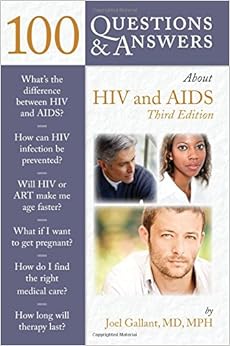
Then I distributed flyers advertising Care Alliance’s Block Party, held the next day. I went to the library, police station (no luck), Boys & Girls Club, and an apartment complex (no luck). I also handed some to a Beechbrook staff member, who shared the rest with her team.
- July 20 – Care Alliance Block Party @ Central Neighborhood
- CA hosts an annual block party. This year it was at their newest branch clinic, Central Clinic. This was a community celebration of health and wellness. Food, beverages, and entertainment were provided, along with raffle prizes and free giveaways!Services included bike repairs, blood pressure checks, cancer screenings (lung, colon, etc.)and information, health education, appointment scheduling, fitness activities (such as Zumba), CMSD student enrollment, and SNAP enrollment. We also had other community resources such as the neighborhood food bank, Molina Health Care, and our HIV van. A face-painter was available for the kids.
The role I had was to greet visitors at my booth and have them sign in if they wanted a meal ticket and/or a BINGO score card. Those who completed the card by going to each booth inside and outside the clinic would then get a raffle ticket to enter the giveaways. We gave away two child bikes and two Dave’s Supermarket gift cards as well as a goodie bag. Everyone who attended the event left with something though – pamphlets, free food, and more. I was amazed at how we had hundreds of people come! Even the CEO and COO of Care Alliance stopped by to thank the staff for our hard work. This was my last day of volunteering for the summer too, and this block party was a great way to end my term.
- CA hosts an annual block party. This year it was at their newest branch clinic, Central Clinic. This was a community celebration of health and wellness. Food, beverages, and entertainment were provided, along with raffle prizes and free giveaways!Services included bike repairs, blood pressure checks, cancer screenings (lung, colon, etc.)and information, health education, appointment scheduling, fitness activities (such as Zumba), CMSD student enrollment, and SNAP enrollment. We also had other community resources such as the neighborhood food bank, Molina Health Care, and our HIV van. A face-painter was available for the kids.
ACKNOWLEDGEMENTS
- Thank you to Carly Hill, my college mentor and HIV Prevention Coordinator of Care Alliance. You’re so motivational and positive! You make things all run smoothly and no one gets left behind when they’re on your team. I am always grateful for you.
- Thank you to Annette James, HIV Prevention Specialist of Care Alliance. Your laidback demeanor was always appreciated! During training, you pushed the volunteers by asking us “Why? Explain it to me. Teach me.” Your presence is calming.
- Thanks to LaChanee Davis, my team supervisor. I really enjoyed working with you. You were very flexible with working out my schedule. You motivated me to be better and was honest with me about my strengths and weaknesses. I also love how you are involved with your own business in addition to what you do with Care Alliance.
- Thank you Mohamed Yugo, for your bright personality. You are very polite and look out for others. You also made me smile often when you danced or sang while driving us in the Mobile Testing Van! Good luck with your MPH at BU!
- Thanks to Bailee, my fellow volunteer. You help make me feel comfortable when we work together. You’re in Public Health as well and you’re going to be a great doctor! You’re hardworking and easygoing.
- Thank you to Karl Kimpo, who works with Planned Parenthood. I have done some community outreach and testing with you. I am glad to meet someone who’s had decades of experience with sexual health and marginalized populations.
- Thanks to the people I have met through Planned Parenthood and Safe on the Scene. It was great to work with you all! Lawrence White, you rocked for organizing our parade walk and booths for Pride!
- Thanks to Care Alliance in general for what it has done for the community. All volunteers have to pat themselves on the back for assisting in carrying out CA’s mission.
- Thanks to the organizations CA collaborated with; community partnerships are a key to success! I learned more about the resources around Cleveland.
- Thank you to my supporters, including the readers of my blog.
REFLECTION
I spent a total of 43 hours with Care Alliance this summer. I enjoyed the work I have done with Care Alliance as part of their HIV Prevention Team. The summer was productive and I reached dozens of individuals. The most pivotal moment of my work (and biggest struggle) was getting over my discomfort with pricking patient fingers. Some really hated needles, and I share their pain. I was able to work with diverse groups of people: people in public housing, people who were incarcerated, people who were MSM, and transgender people.
The amount of knowledge I gained while volunteering was tremendous! I furthered my own knowledge on HIV and the stigmas people have towards it. I learned about the Ryan White CARE Act, which made it possible for more treatment, attention, and funding to be allowed for HIV/AIDS. We have come a long way since AIDS was called an epidemic in the 1980s; before, public discourse perceived AIDS as contagious and people with AIDS would not be allowed in schools or other areas. Fear guided people’s actions. With technology and education, there is less controversy over it. Public health is such a rewarding field and I am happy to be in this major at OSU.
During winter break, I strongly believe I’ll return to Care Alliance to help out more with their HIV efforts.
ADDITIONAL INFORMATION
Please see these resources to learn more:
“Giving HIV Test Results”, April 2013, by Maria A. Corwin, LCSW, CAC III, and edited by Lucy Bradley-Springer, PhD, RN, ACRN, FAAN.
HIV/AIDS
http://ryanwhite.com/rwcareact.html
https://www.aids.gov/
https://www.cdc.gov/hiv/basics/index.html
To find a testing site near you:
- visit ActAgainstAIDS,
- text your ZIP code to KNOWIT (566948), or
- call 1-800-CDC-INFO (232-4636).
For Care Alliance:
www.carealliance.org
Follow them on Facebook and Twitter as well!
For Safe on the Scene,
http://www.safeonthescene.com
https://www.facebook.com/safeonthescene/
#SafeontheScene #KnowingisSexy
For LGBT Center of Greater Cleveland:
https://www.facebook.com/LGBTCLEVELAND/
http://lgbtcleveland.org/index.html
